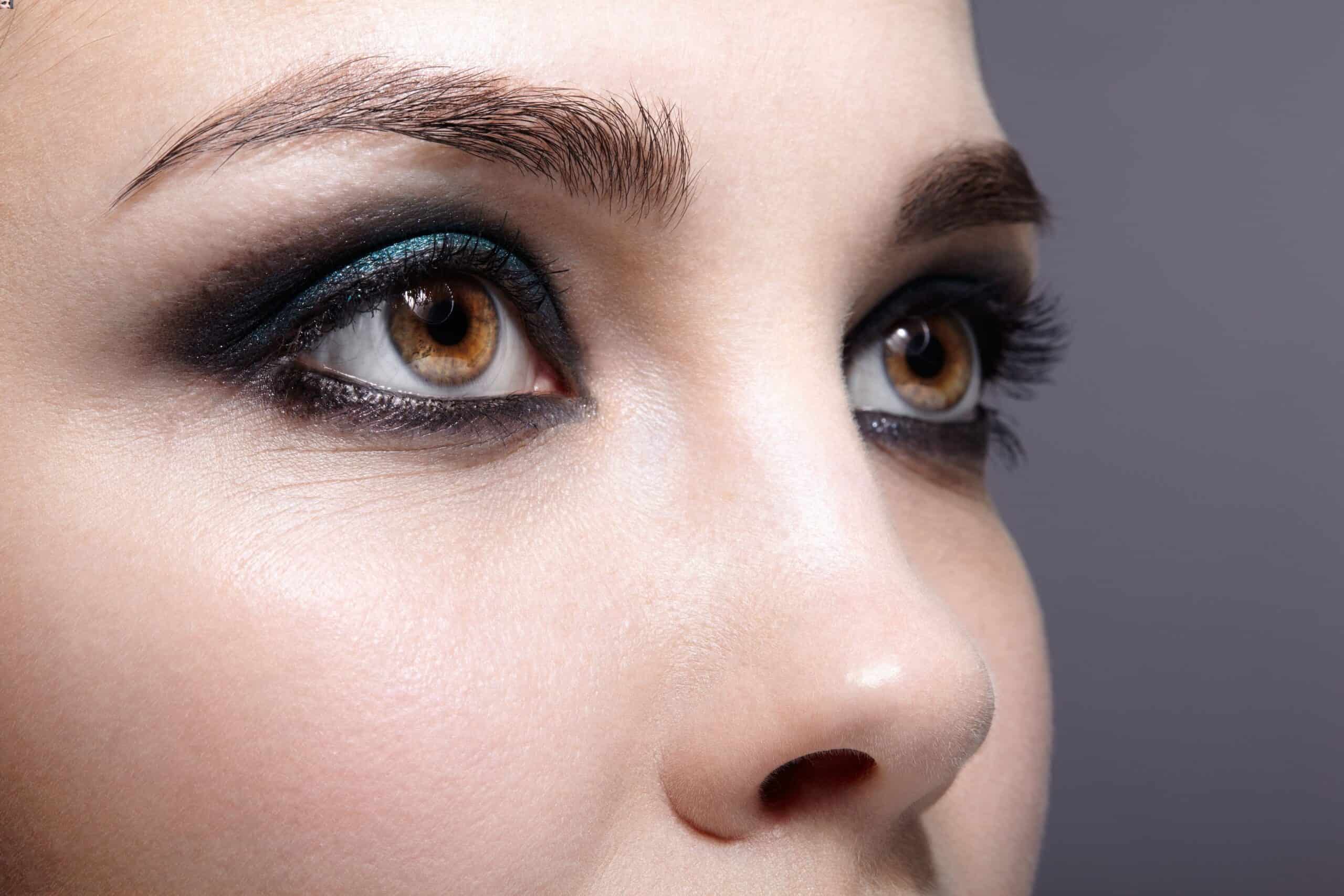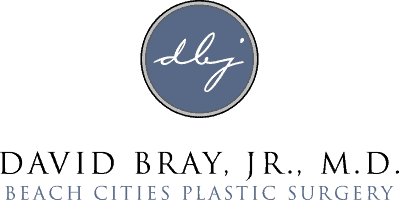Blepharoplasty (Eyelid Surgery)
in Torrance, CA
Also serving Palos Verdes & Redondo Beach
Blepharoplasty is eyelid plastic surgery performed to improve and rejuvenate the eyelids. Blepharoplasty may be performed for the upper or lower eyelids. Most patients seeking upper eyelid rejuvenation have excess skin hanging down toward the eyelashes. During upper blepharoplasty, Dr. Bray, Jr. will remove this excess skin and in some cases remove excess fatty tissue and muscle.

Patients seeking lower eyelid surgery will usually have “bags” in the lower eyelids. During lower eyelid blepharoplasty, Dr. Bray, Jr. will remove the excess fatty tissue causing the bags and in many cases remove excess or sagging skin. Dr. Bray Jr.’s credentials as a facial plastic surgeon and a plastic surgeon assure his patients that they are receiving the most advanced and highest quality care.
Upper Eyelid Blepharoplasty Techniques
Traditional Blepharoplasty: An incision is made in the supratarsal crease of the upper eyelid. This crease is usually about 10 mm above the eyelashes. A superior incision is then made to remove the excess skin in the upper eyelid. After removal of the skin, redundant muscle and excess fat may be removed. The amount of skin, muscle, and fat removal should be based on the patient’s anatomy and concerns. Dr. Bray, Jr. will discuss these options with you at your consultation.
Asian Blepharoplasty: Dr. Bray, Jr. will utilize many different techniques in order to achieve the goals of the Asian patient. In some cases the incision is made 6mm above the eyelashes. This incision is lower than the incision used for the western eyelid. This will help to maintain the ethnic characteristics of the eyelid. The incision will also allow Dr. Bray Jr. to create a double eyelid and supratarsal crease. For patients who desire a more westernized appearance the incision may be made higher at 8 or 10mm above the eyelashes. The amount of skin excision will also be determined by the desires of the patient. The epicanthal fold must also be addressed. Depending on the patient’s concerns the epicanthal fold may be modified. An inside fold or an outside fold may be achieved with the surgery, and the fold position will be based on the interests of the patient.
Ptosis Surgery: Some patients who present for upper eyelid surgery have eyelid ptosis. These patients require additional surgery at the time of blepharoplasty. This surgery usually involves plicating or shortening the levatoraponeurosis. The levator muscle is the muscles used to open the upper eyelid. Shortening this structure elevates the eyelid and in some cases can correct eyelid ptosis.
Lower Eyelid Blepharoplasty Techniques
Patients seeking lower eyelid surgery will usually have “bags” in the lower eyelids. During lower eyelid blepharoplasty, Dr. Bray, Jr. will remove the excess fatty tissue causing the bags and in many cases remove excess or sagging skin.
Traditional Blepharoplasty: An incision is made below the eyelashes and the skin and muscle are elevated to expose underlying fat. The fat lies in three compartments and may be removed or repositioned depending on the patient. When the fat is repositioned it is moved over the orbital rim. This helps to fill in the concave tear trough. When fat is removed or repositioned the bags of the lower eyelid are improved. After treating the fat the excess skin and muscle are removed.
The Transconjunctival Approach: The incision is made on the inside of the lower eyelid. Through this incision the excess fat may be removed, however excess skin is not removed. This procedure may be ideal for patients who have excess fat or bags, but who do not have significant excess skin of the lower eyelid.
Canthal Tightening: In many patients lateral canthal tightening is required. If the lower eyelid has significant laxity or poor position, a canthal tightening procedure may be necessary. The canthopexy procedure involves placing a suture through the lateral canthus and the lateral orbital rim in order to tighten the lower eyelid. Lateral canthoplasty involves dividing the lateral canthus and reattaching the canthal ligament in order to tighten and reposition the lower eyelid.
The Surgery
The procedure may be performed with local anesthesia, local anesthesia with IV sedation, or general anesthesia. This procedure is performed on an outpatient basis. It is important to arrange for care after the surgery. Someone must drive you home and be available to care for you for the first 24 hours.
Complications are unlikely when performed by a surgeon with experience in blepharoplasty. These include: bleeding and swelling, delayed wound healing, infection, drooping of eye upper or lower eyelid, asymmetry, change in vision, double vision and dry eyes.
Recovery: What to Expect
The area surrounding the eyes will remain swollen in the days following the surgery. It should begin to subside after the first day. Some vision blurring is normal.
The stitches will be removed in 4-5 days. Swelling and bruising will persist for about 10 days, but you can begin wearing makeup to help conceal these concerns. Dr. Bray, Jr. will inform you when you may return to more strenuous activities after the procedure.
FAQs
What are the different techniques used in upper eyelid blepharoplasty?
Upper eyelid blepharoplasty can be performed using various techniques, depending on the patient’s specific needs and desired outcomes. Dr. Bray employs advanced methods to ensure natural-looking results and minimize scarring. The primary techniques include:
Traditional Upper Eyelid Surgery: This technique involves making an incision along the natural crease of the upper eyelid. Excess skin, muscle, and sometimes fat are removed to create a more defined and youthful appearance. This method is ideal for patients with significant skin sagging and puffiness.
Transconjunctival Blepharoplasty: In this approach, the incision is made inside the lower eyelid, avoiding any external scars. It is particularly useful for patients who primarily need fat removal or redistribution without the need to address excess skin. This technique is less invasive and often results in a quicker recovery.
What is the recovery process like after lower eyelid blepharoplasty?
Recovery after lower eyelid blepharoplasty is generally smooth, but it requires careful attention to ensure optimal healing and results. Here’s what you can expect during the recovery period:
Immediate Post-Operative Care: Right after the surgery, you may experience some swelling, bruising, and mild discomfort. Dr. Bray will provide you with specific instructions on how to care for your eyes, including the use of cold compresses to reduce swelling and prescribed medications to manage any pain.
First Week: During the first week, it is essential to rest and avoid strenuous activities. Keeping your head elevated, especially while sleeping, can help minimize swelling. Dr. Bray may recommend using lubricating eye drops to prevent dryness and ensure comfort.
Follow-Up Visits: You will have follow-up appointments with Dr. Bray to monitor your healing progress. Stitches, if used, are usually removed within a week. It’s crucial to attend these appointments to address any concerns and ensure your recovery is on track.
Gradual Resumption of Activities: Most patients can return to their normal activities within 10 to 14 days, though strenuous exercise and heavy lifting should be avoided for a few weeks. Bruising and swelling will gradually subside, revealing the improved contour of your lower eyelids.
Long-Term Care: Protecting your eyes from sun exposure by wearing sunglasses and applying sunscreen is vital to maintaining your results. Dr. Bray will provide you with guidelines on skincare and any additional treatments that may enhance your overall appearance.
Can blepharoplasty be combined with other facial procedures?
Yes, blepharoplasty can be combined with other facial procedures to achieve a more comprehensive rejuvenation. Dr. Bray often performs blepharoplasty in conjunction with the following treatments:
Facelift: Combining a facelift with eyelid surgery can address signs of aging in both the upper and lower face, providing a more balanced and youthful look. This approach targets sagging skin, deep wrinkles, and loss of facial volume.
Brow Lift: A brow lift can be performed alongside upper eyelid surgery to correct drooping eyebrows and forehead wrinkles. This combination enhances the overall appearance of the upper face, creating a more refreshed and alert look.
Dermal Fillers and Botox: Non-surgical treatments like dermal fillers and Botox can complement blepharoplasty by smoothing out fine lines and wrinkles and adding volume to hollow areas around the eyes. These treatments provide a more youthful and harmonious facial appearance.


